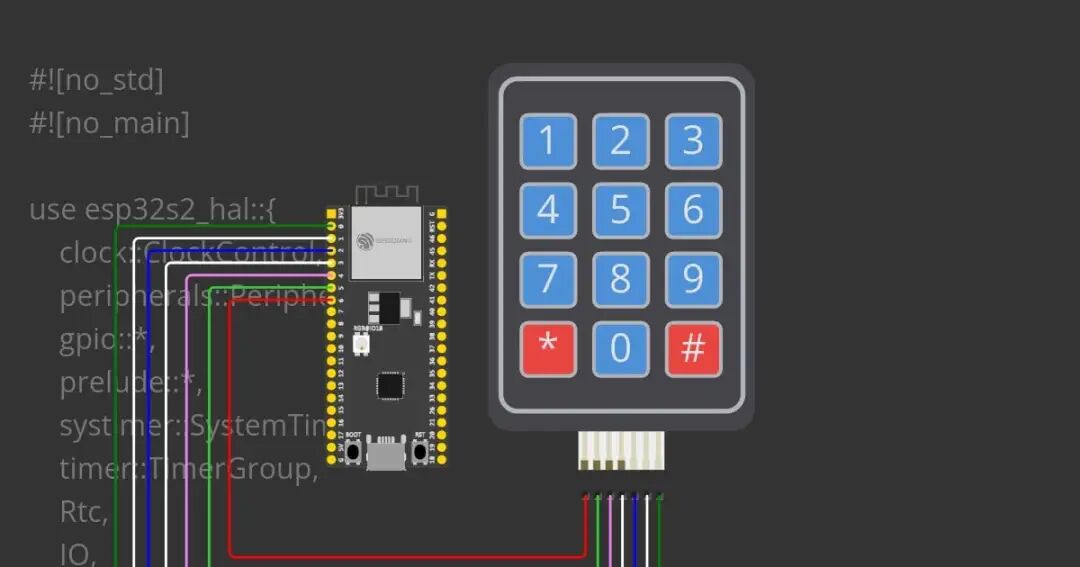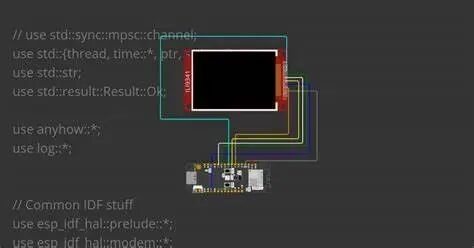The ESP32 series chips are highly favored in the IoT field due to their cost-effectiveness and powerful features. The Rust programming language, with its memory safety and high performance characteristics, has become an ideal choice for embedded development. ESP-IDF-HAL serves as a perfect bridge that combines both, providing developers with a safe and efficient Rust programming experience for ESP32 chips.

The Core Value of ESP-IDF-HAL
ESP-IDF-HAL is a Rust library that provides a series of safe and easy-to-use wrappers, encapsulating the drivers from the ESP IDF SDK into Rust-friendly APIs. With ESP-IDF-HAL, developers can easily access the hardware resources of the ESP32 series chips using the Rust language, including GPIO, SPI, I2C, TIMER, PWM, I2S, UART, and more.

Main Features of ESP-IDF-HAL
-
• Comprehensive Compatibility with Embedded HAL Standards: ESP-IDF-HAL implements versions V0.2 and V1.0 of the embedded HAL standard, supporting both blocking and asynchronous modes, and is compatible with other embedded hardware libraries, facilitating easy porting and extension for developers.
-
• Rich Driver Support: ESP-IDF-HAL supports almost all drivers in the ESP IDF SDK, including GPIO, SPI, I2C, TIMER, PWM, I2S, UART, etc., meeting the needs of most embedded application scenarios.
-
• Flexible Programming Modes: ESP-IDF-HAL provides both blocking and asynchronous modes for each driver, allowing developers to choose the mode that best fits their project requirements, thereby improving development efficiency.
-
• Convenient System Access: ESP-IDF-HAL re-exports the
<span>esp-idf-sys</span>library, making it easier for developers to access the underlying ESP IDF system interfaces for more flexible functionality extensions. 
Use Cases of ESP-IDF-HAL
ESP-IDF-HAL has a wide range of use cases, suitable for various embedded projects based on the ESP32 series chips, such as:
-
• IoT device development
-
• Smart home control systems
-
• Industrial automation control
-
• Data collection and analysis
Getting Started with ESP-IDF-HAL
Developing projects with ESP-IDF-HAL is very simple. Here are a few quick steps to get started:
-
1. Install the Rust Development Environment: Ensure that the Rust toolchain and the
<span>cargo-espflash</span>tool are installed. -
2. Create a Project: Use the
<span>esp-idf-template</span>project template to create a new project, which integrates ESP-IDF-HAL and other necessary dependencies. -
3. Write Code: Use the APIs provided by ESP-IDF-HAL to access hardware resources such as GPIO, SPI, I2C, etc.
-
4. Compile and Flash: Use the
<span>cargo-espflash</span>tool to compile and flash the project to the ESP32 device.
Example Demonstration: Lighting Up an LED
The following code demonstrates how to light up an LED on the ESP32 device using ESP-IDF-HAL:
use esp_idf_hal::{
gpio::{Gpio, Output},
peripherals::Peripherals,
prelude::*,
};
fn main() -> Result<(), Box<dyn std::error::error="">> {
// Initialize ESP32 device
let peripherals = Peripherals::take().unwrap();
let mut led = peripherals.pins.gpio2.into_output()?;
// Set LED to high, lighting it up
led.set_high()?;
// Loop waiting
loop {}
Ok(())
}</dyn>Conclusion
ESP-IDF-HAL provides developers with a safe and efficient Rust programming experience for ESP32 chips, helping them quickly build powerful embedded applications. With ESP-IDF-HAL, developers can fully leverage the advantages of the Rust language to create safer, more reliable, and efficient ESP32 projects.
Project Address: https://github.com/esp-rs/esp-idf-hal